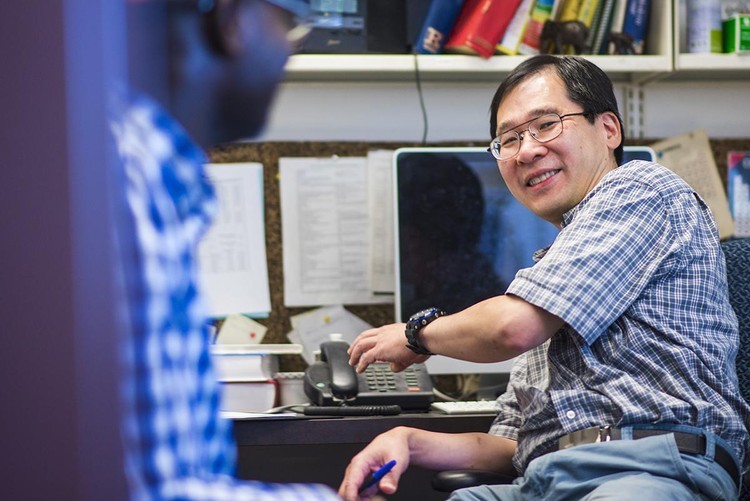Bringing efficient solar cells closer to reality
Katie Willis, Faculty of Science - 18 September 2017

The power of artificial intelligence is being harnessed to build more efficient solar cells.
UAlberta chemist Arthur Mar and his research team are using machine learning algorithms to detect hidden patterns between thousands of data points—in a way that a human being simply can’t.
The result of these computations is a yet-to-be-determined new material that will reduce the cost to produce as well as the energy required to power a solar cell.
“The most difficult thing to do in the research process is to think outside the box and come up with an entirely new project or idea,” explained Mar. “Our limited knowledge and our inherently biased perspective as human beings make this even more challenging.”
“The most difficult thing to do in the research process is to think outside the box and come up with an entirely new project or idea.” —Arthur Mar
New applications
While machine learning isn’t new (in fact, it’s everywhere from airport security to your credit card), Mar is one of the only researchers in Canada applying its principles to the world of chemistry.
“My lab in the Department of Chemistry is acting as the bridge between the computing scientists who have develop the algorithms of machine learning tools and those who want to apply this information to make new things,” said Mar.
The future of solar power
Working with Jillian Buriak, fellow chemist and Canada Research Chair in Nanomaterials, Mar and his team will identify the required components of the ideal solar cell material and use machine learning to develop proposals for new materials, in hopes of building more efficient and powerful solar cells.
“The future of research lies in machine learning, and the future of energy lies in sustainable, renewable alternatives,” said Mar. “It’s a great opportunity to work at the intersection of both.”
This project is underway with funding from Future Energy Systems.
This story originally appeared on the UAlberta Faculty of Science website. For more science news, click here.